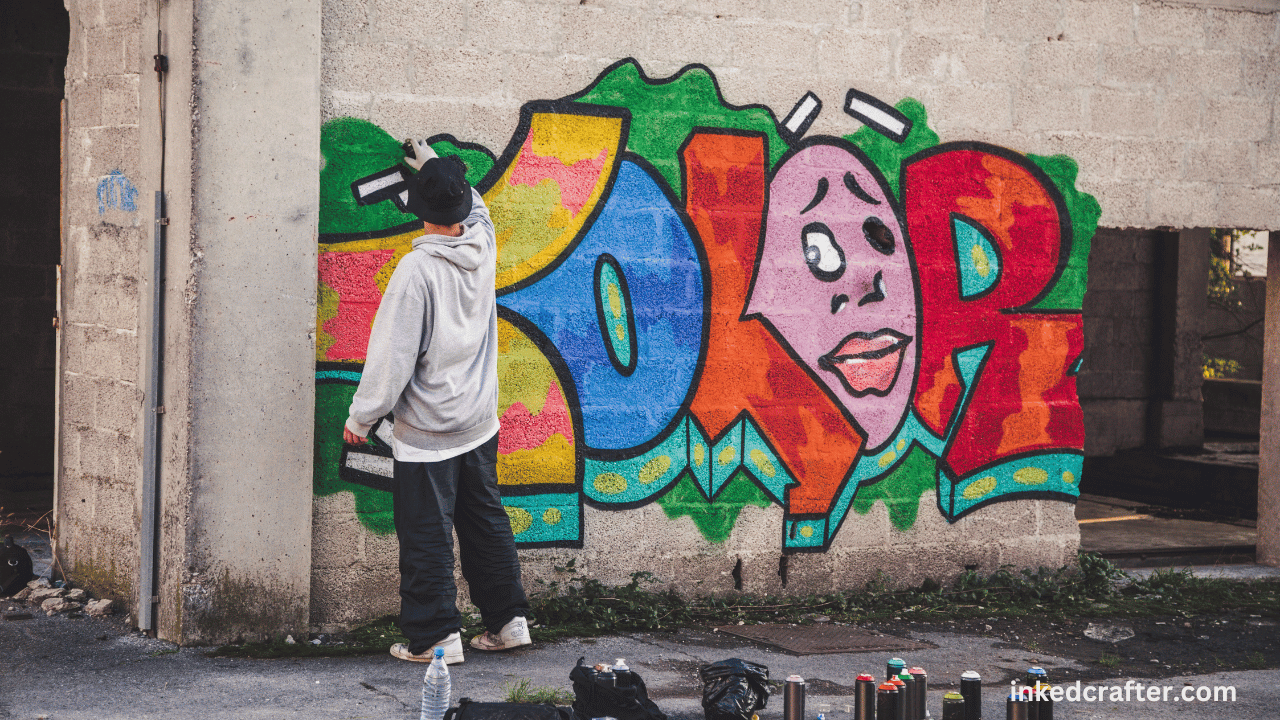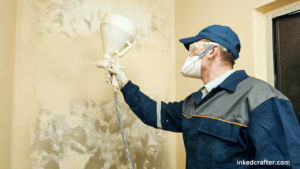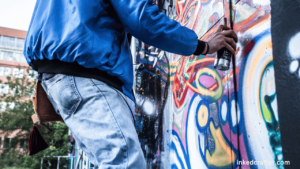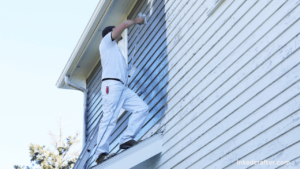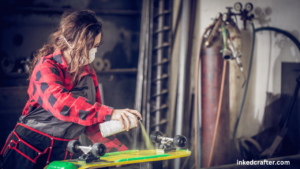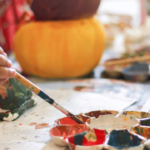As a simple and time-saving method for tackling home repair projects or revitalizing old furniture, spray painting indoors might be an excellent choice. However, if it is not done cautiously, there is a possibility that it could result in hazards.
The fumes and particles that are created during the process of spray painting might not only cause damage to your goods but also constitute a risk to your health during the process.
For the purpose of ensuring that your experience with interior spray painting projects goes smoothly and without any potential dangers, we will give you with some key safety guidelines included in this post.
This article will outline the necessary procedures that must be taken prior to commencing an indoor painting project. These measures encompass proper ventilation protocols and guidance regarding protective gear.
When working with spray paint inside, it is essential to put safety first, regardless of whether you are an experienced do-it-yourself enthusiast or a novice who is wanting to liven up your living area. By adhering to these guidelines.
you will be able to reduce the risks that are connected with spray painting indoors, obtain results that appear professional, and continue to maintain your health without compromising your safety. Continue reading to find out how to make your next endeavor a painting project that is both safe and successful by creating an indoor painting atmosphere.
When it comes to indoor painting projects, using spray paint can be a convenient and efficient option. However, it’s essential to prioritize safety and follow best practices to ensure a successful outcome.
In this guide, we will discuss how to safely use spray paint indoors, prevent overspray and contamination, avoid health risks and fume exposure, troubleshoot common painting issues, and the benefits of consulting professionals for indoor projects.

Contents
How to Safely Use Spray Paint Indoors
Whether you’re touching up furniture or giving a fresh coat to your cabinets, using spray paint indoors requires careful planning. One crucial aspect is ensuring proper ventilation in your workspace. Adequate ventilation helps in dissipating paint fumes and maintaining air quality.
Using a spray booth is another effective way to contain overspray and minimize the spread of paint particles in the surrounding area. Additionally, wearing protective gear such as a respirator and goggles is essential to safeguard your health.
Preventing Overspray and Contamination
Setting up a controlled work area is key to preventing overspray and contamination when spray painting indoors. Clear the space of any valuable items and cover surfaces with drop cloths and protective coverings to avoid accidental paint splatters.
In case of spills or splatters, have the necessary cleaning supplies on hand to address them promptly and prevent them from spreading further.

Avoiding Health Risks and Fume Exposure
Understanding the dangers of paint fumes is crucial for anyone undertaking an indoor painting project. Properly ventilating the painting area by opening windows and using fans can help in reducing fume exposure.
It’s important to follow best practices to minimize exposure to volatile organic compounds (VOCs) present in paint products. These steps can help protect your respiratory health during and after the painting process.
Troubleshooting Common Indoor Painting Issues
Dealing with clogged sprayer nozzles or addressing uneven spray patterns are common challenges that DIY painters may encounter.
Choosing the right type of paint for indoor projects and ensuring your spray gun is functioning properly can help in overcoming these issues. Understanding how different paint products behave and adjusting your technique accordingly can result in a smooth and professional finish.
Consulting Professionals for Indoor Painting Projects
While DIY painting projects can be fulfilling, there are benefits to consulting professional painters for indoor projects. Professionals can provide expert advice on indoor painting techniques, recommend the best paint products for your specific needs, and ensure quality assurance throughout the project.
Additionally, hiring professionals can offer post-project support, giving you peace of mind that the job has been done to a high standard.
Conclusion
When spray painting inside, safety should always be the main priority. This is especially true when working with spray paint. Having adequate ventilation, wearing protective gear, and meticulously preparing the workplace are all essential components to guarantee not only one’s own well-being but also the quality of the project that is ultimately completed.
By adhering to these best practices and maintaining vigilance throughout the painting process, individuals can reduce the likelihood of experiencing adverse health effects, obtain adequate outcomes, and have a positive and successful experience while painting inside buildings.
FAQs
- Q: Can I use a paint sprayer indoors?
- A: Yes, you can use a paint sprayer indoors, but it’s important to follow safety guidelines and best practices to ensure proper ventilation and minimize risks.
- Q: What type of sprayer should I use for indoor projects?
- A: For indoor projects, it’s recommended to use an HVLP (high volume, low pressure) sprayer or an airless sprayer, as they produce less overspray and are generally safer to use indoors.
- Q: Do I need a spray booth for indoor painting?
- A: While a spray booth is not mandatory for indoor painting, it can help contain overspray and minimize the spread of paint particles. Using a drop cloth or tarp can also serve the same purpose.
- Q: Is it safe to paint indoors without a respirator?
- A: It is not recommended to paint indoors without a respirator, as paint fumes can be harmful to your health. Always use a respirator when working with paint indoors.
- Q: How can I prevent paint from getting on surfaces I don’t want to paint?
- A: Using a drop cloth or plastic sheeting to cover furniture, floors, and other surfaces can help protect them from paint overspray.
- Q: What should I do if I prefer to spray paint indoors?
- A: If you like to spray paint indoors, make sure to set up a well-ventilated area with proper protective gear, such as a respirator and goggles, to ensure your safety.
- Q: Are there specific safety tips for spraying indoors with aerosol spray cans?
- A: When using aerosol spray cans indoors, ensure adequate ventilation, wear a respirator, and keep the area well-ventilated to minimize exposure to harmful fumes.
- Q: Can painting indoors with certain types of paint finishes be hazardous?
- A: Some paint finishes contain volatile organic compounds (VOCs) which can be harmful when inhaled. Make sure to use low-VOC or VOC-free paints when painting indoors.
- Q: What precautions should I take when painting near windows and doors indoors?
- A: When painting near windows and doors indoors, ensure proper ventilation by opening windows and doors to allow fresh air circulation and prevent the accumulation of paint fumes.

